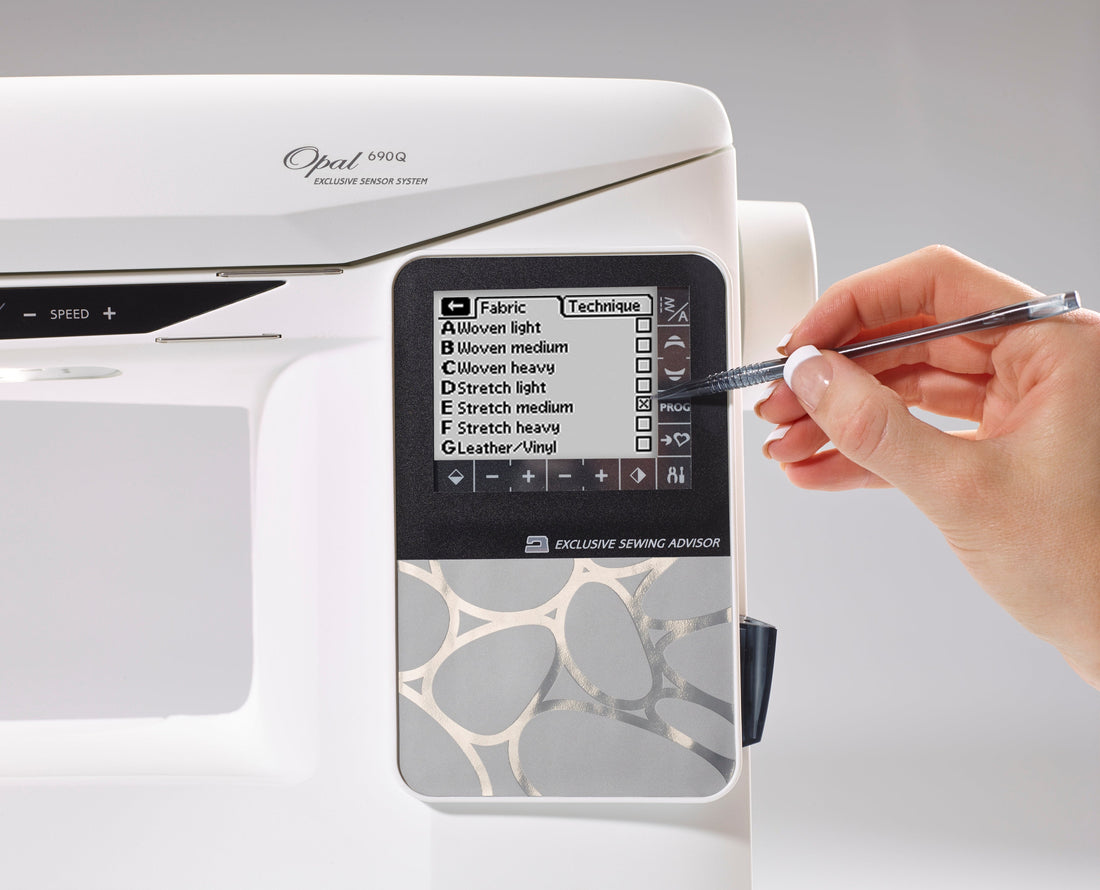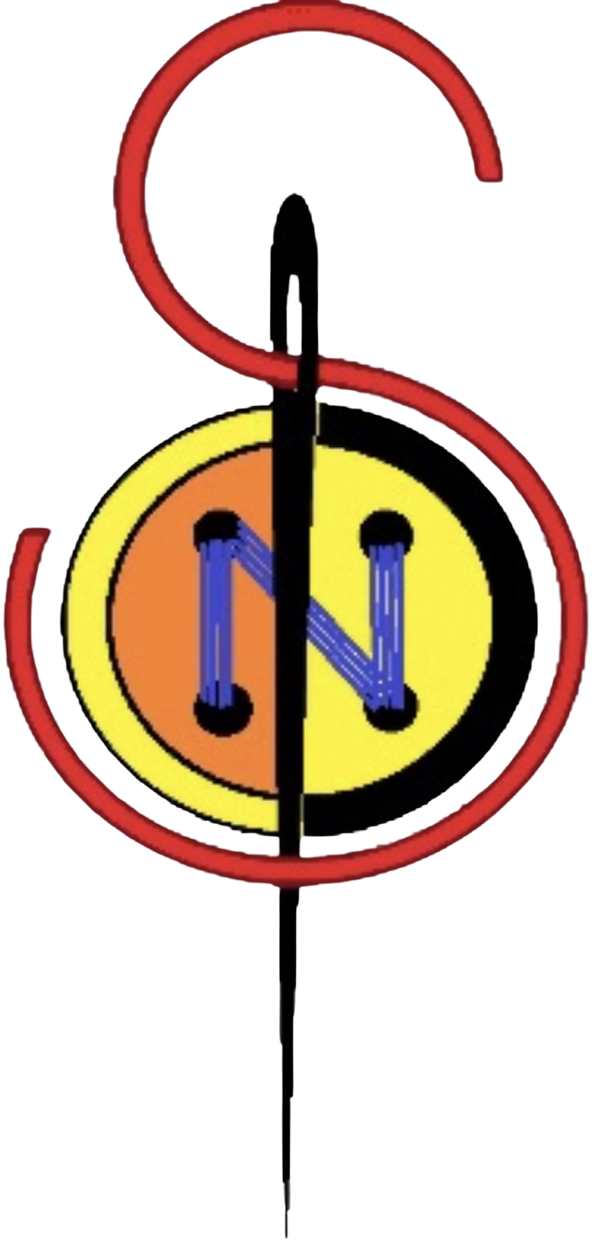
5 Signs It’s Time to Upgrade Your Sewing Machine
Share
Diminished Stitch Quality and Precision
When your sewing machine begins producing inconsistent stitches, it's often the most telling harbinger that replacement time has arrived. Erratic tension patterns, skipped stitches, or thread shredding indicate internal mechanisms have deteriorated beyond economical repair. Modern computerized machines offer superior stitch regulation through advanced servo motors and digital tension control systems that maintain consistent results across varying fabric weights.
Professional quilters and garment constructors particularly benefit from contemporary machines featuring automatic thread cutting, programmable stitch sequences, and micro-adjustment capabilities. These technological advancements eliminate the frustrating rework cycles that plague aging mechanical units.
Thread Tension Irregularities
Chronic tension problems manifest as puckered seams, loose upper threads, or bobbin thread visibility on the fabric's right side. While basic tension adjustments might temporarily resolve issues, persistent problems typically indicate worn tension discs, damaged check springs, or compromised bobbin cases. Contemporary machines employ electronic tension systems that automatically adjust based on selected stitches and fabric types, virtually eliminating manual guesswork.
Mechanical Timing Issues
Machine timing controls the precise coordination between needle position and bobbin hook rotation. When timing shifts, you'll notice skipped stitches, thread bunching, or needle strikes against the bobbin case. Professional timing adjustments require specialized knowledge and tools, often costing more than upgrading to a modern machine with self-calibrating mechanisms.
Frequent Mechanical Breakdowns and Maintenance Requirements
Escalating repair frequencies signal your machine has entered its senescence phase. When maintenance costs exceed 40-50% of a comparable new machine's price within a single year, replacement becomes financially prudent. Modern sewing machines incorporate self-lubricating systems, diagnostic capabilities, and modular components that significantly reduce maintenance demands.
"A reliable sewing machine should operate consistently for thousands of hours between major services. If you're calling repair technicians monthly, it's time to consider upgrading to contemporary technology that prioritizes dependability."
Component Obsolescence
Vintage machines often require proprietary parts that manufacturers discontinued years ago. Sourcing replacement components becomes increasingly difficult and expensive, with some parts requiring custom fabrication. Modern machines benefit from standardized components and extensive dealer networks ensuring long-term serviceability.
Motor Performance Degradation
Aging motors lose torque capacity, struggle with heavy fabrics, and may develop speed irregularities. Contemporary brushless motors provide consistent power delivery, variable speed control, and whisper-quiet operation that enhances your sewing experience while reducing fatigue during extended sessions.
Limited Functionality for Evolving Project Needs
Creative ambitions often outgrow machine capabilities. Basic mechanical units restrict your repertoire to fundamental straight and zigzag stitches, while modern computerized machines offer extensive stitch libraries, embroidery capabilities, and specialized techniques like buttonhole automation and decorative hemstitching.
Today's sewists increasingly demand versatility for diverse projects spanning quilting, garment construction, home décor, and specialty applications. Contemporary machines accommodate this versatility through modular accessories, programmable functions, and integrated computer connectivity.
Stitch Variety Limitations
Modern machines typically offer 100-400+ built-in stitches compared to vintage machines' 10-20 options. This expanded repertoire includes utility stitches for specific fabrics, decorative patterns for embellishment, and specialty techniques like blind hemming or overlock simulation.
Automation Deficiencies
Manual processes like threading, bobbin winding, and buttonhole creation consume significant time and introduce potential errors. Contemporary machines feature automatic threading systems, drop-in bobbin loading, and one-step buttonholes that streamline workflow while ensuring consistent results.
Incompatibility with Modern Fabrics and Techniques
Fashion and quilting industries continuously introduce innovative textiles requiring specialized handling. Stretch knits, technical fabrics, and layered composites challenge older machines lacking appropriate feed systems and stitch formations. Modern machines incorporate dual-feed mechanisms, adjustable presser foot pressure, and fabric-specific stitch recommendations.
Contemporary sewing increasingly emphasizes precision techniques like foundation paper piecing, free-motion quilting, and multi-directional stitching that older machines cannot execute effectively. Upgrading unlocks these creative possibilities while ensuring professional-quality results.
Feed System Inadequacies
| Fabric Type | Required Feed System | Modern Machine Advantage |
|---|---|---|
| Stretch Knits | Differential Feed | Prevents stretching and puckering |
| Slippery Silks | Even Feed/Walking Foot | Maintains layer alignment |
| Heavy Denim | High-Lift Presser Foot | Accommodates thick seam intersections |
Presser Foot Compatibility
Specialized techniques require dedicated presser feet that may be unavailable for vintage machines. Modern machines offer extensive accessory ecosystems including bias binding feet, quarter-inch quilting feet, and specialty embroidery attachments that expand creative possibilities exponentially.
Technology Integration and Workflow Enhancement
Contemporary sewing embraces digital integration through USB connectivity, touchscreen interfaces, and smartphone applications that revolutionize project planning and execution. These technological advances represent paradigmatic shifts in sewing methodology rather than mere convenience features.
Modern machines connect to design software, enabling custom embroidery creation, stitch modification, and pattern storage. This connectivity transforms your sewing space into an integrated creative environment where digital design seamlessly translates into physical construction.
Digital Interface Benefits
- Intuitive touchscreen navigation eliminates complex button combinations
- Visual stitch preview prevents costly mistakes
- Project memory storage enables consistent technique replication
- Automatic stitch recommendations based on fabric selection
- Software updates expand functionality post-purchase
Connectivity Advantages
Wi-Fi enabled machines access online stitch libraries, tutorial content, and community patterns that continuously expand your creative resources. This connectivity ensures your investment remains current as new techniques and designs emerge within the global sewing community.
Making the Upgrade Decision
Should I buy a new sewing machine? This question ultimately depends on balancing current limitations against creative aspirations and budget considerations. Professional seamsters and dedicated hobbyists benefit most from upgrading, while occasional users might continue with properly maintained vintage equipment.
Consider your annual sewing hours, project complexity, and frustration levels with current equipment. If mechanical limitations consistently impede creative expression, upgrading becomes an investment in artistic fulfillment rather than mere equipment acquisition.
Frequently Asked Questions
What are the benefits of a new sewing machine over repairing an old one?
New machines offer enhanced reliability, expanded capabilities, modern safety features, and warranty protection. Repair costs often approach new machine prices while providing only temporary solutions to aging components.
How do I know if I need a new sewing machine?
Evaluate repair frequency, project limitations, and time spent troubleshooting versus actual sewing. If maintenance consumes more time than creation, replacement becomes prudent.
What modern sewing machine technology should I prioritize?
Focus on features matching your primary applications: computerized controls for precision work, extensive stitch libraries for versatility, or embroidery capabilities for decorative projects. Avoid feature overload that increases complexity without practical benefit.
